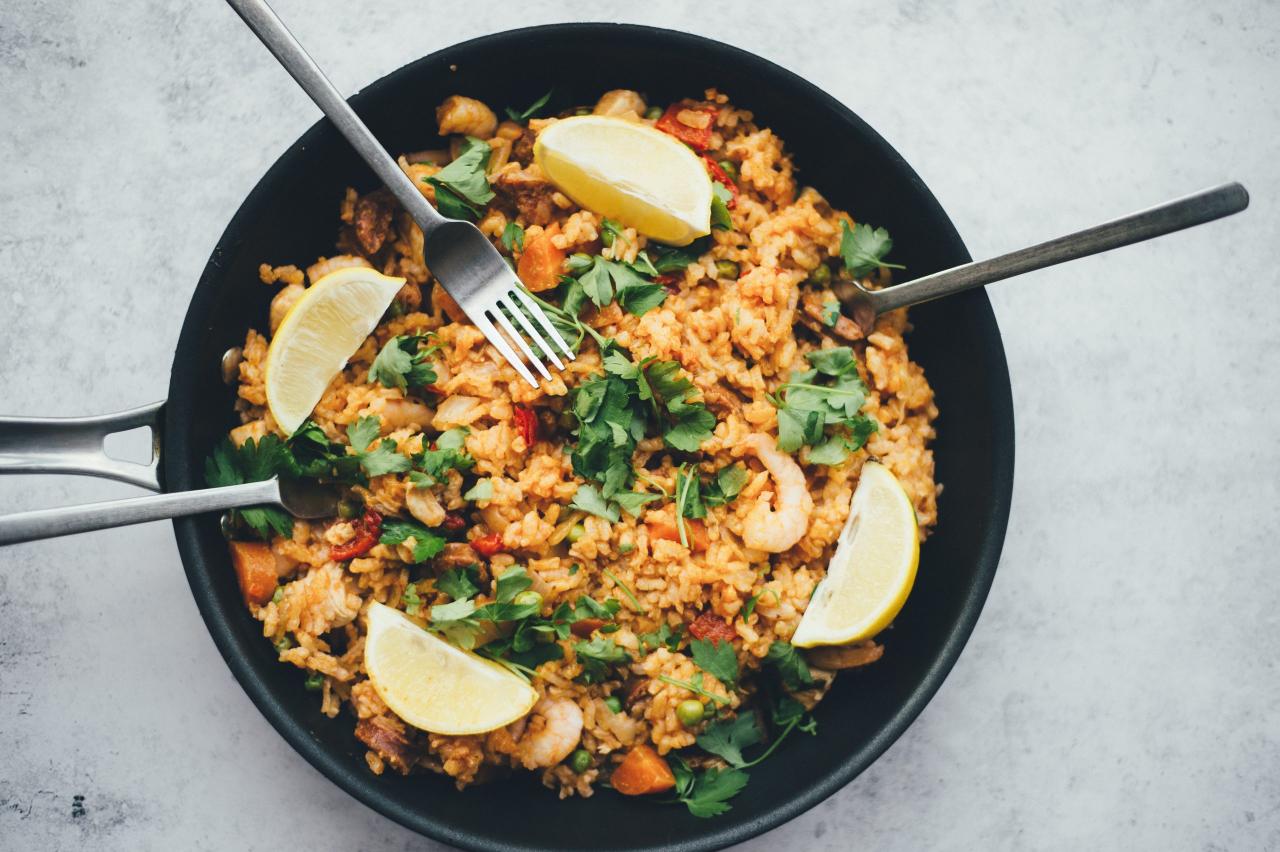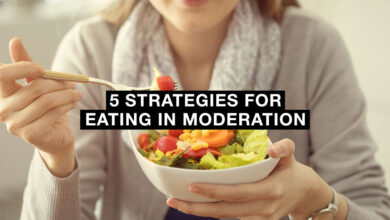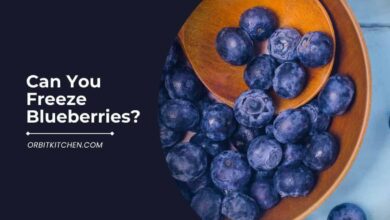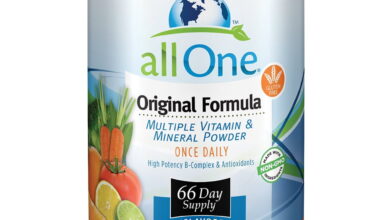
Your Healthy Guide to Cooking with Frozen Foods
Your healthy guide to cooking with frozen foods is here to revolutionize your kitchen! Frozen foods often get a bad rap, but they can be a delicious and nutritious addition to your meals. Forget the misconception of bland, processed food – frozen ingredients can be just as flavorful and healthy as their fresh counterparts, especially when you know how to choose and prepare them.
This guide will walk you through the world of frozen foods, from vegetables and fruits to meats, seafood, and even dough. We’ll cover everything from choosing the best frozen options to preparing them in creative and delicious ways. You’ll learn tips for maximizing freshness, making meal planning a breeze, and discovering the hidden potential of frozen foods.
The Convenience and Value of Frozen Foods
Frozen foods have evolved beyond just a quick meal option. They offer a range of benefits that make them a valuable addition to any kitchen. From convenience and affordability to nutritional value, frozen foods can be a smart choice for busy individuals and families alike.
Selecting High-Quality Frozen Foods
Choosing high-quality frozen ingredients is essential for ensuring both taste and nutritional value. Look for frozen foods that are minimally processed and have a short list of ingredients. Freshness is crucial, so check the packaging for dates and avoid products with freezer burn or discoloration.
- Look for minimally processed foods:Opt for frozen fruits and vegetables that are simply frozen without added sugars, salts, or preservatives.
- Read the ingredient list:Choose products with minimal ingredients, avoiding those with artificial flavors, colors, or preservatives.
- Check the packaging date:Ensure the product is fresh and has not been frozen for an extended period.
- Avoid freezer burn:Look for frozen foods that are free from ice crystals or discoloration, indicating proper freezing and storage.
Environmental Impact of Frozen Foods
The environmental impact of frozen foods is a complex issue with various factors to consider. While freezing and transportation contribute to energy consumption, frozen foods can also reduce food waste by preserving produce that might otherwise spoil.
“Frozen foods can help reduce food waste by extending the shelf life of perishable products.”
My healthy guide to cooking with frozen foods is all about making meal prep a breeze. Sometimes, though, even the simplest recipes can feel overwhelming. If you’re feeling stressed, take a few minutes to check out 8 quick ways to reduce stress right now.
Once you’re feeling more relaxed, you can come back to my guide and whip up a delicious and nutritious meal with those frozen ingredients you’ve got on hand.
- Reduced food waste:Frozen foods can help reduce food waste by preserving produce that might otherwise spoil, leading to a more sustainable food system.
- Energy consumption:The freezing and transportation of frozen foods require energy, contributing to greenhouse gas emissions.
- Seasonal availability:Frozen foods allow consumers to access a wider variety of fruits and vegetables year-round, reducing the need for transportation and storage of fresh produce.
Frozen Vegetables

Frozen vegetables are a convenient and nutritious addition to any meal. They offer a wide variety of options, are often more affordable than fresh produce, and can be stored for longer periods.
Preparing and Cooking Frozen Vegetables
Frozen vegetables are already cleaned and prepped, making them a time-saving option. Here are some common methods for preparing and cooking them: Blanching:This method involves quickly boiling vegetables in water for a short period, then immediately plunging them into ice water to stop the cooking process.
My healthy guide to cooking with frozen foods focuses on simple, nutritious meals that don’t require hours of prep. But sometimes, a special occasion calls for a little extra flair. That’s where a vibrant Thanksgiving table comes in! For inspiration on how to add pops of color to your holiday spread, check out this article on 5 ways to fill your Thanksgiving table with color.
And remember, even with a colorful feast, you can still keep things healthy by using frozen vegetables, fruits, and even meats in your recipes.
Blanching helps preserve the vegetables’ color, texture, and nutrients. Steaming:Steaming is a healthy cooking method that uses the heat from boiling water to cook the vegetables. It helps retain nutrients and flavor. Roasting:Roasting vegetables in the oven with a little oil and seasonings brings out their natural sweetness and creates a crispy texture.
Stir-frying:Stir-frying is a quick and flavorful cooking method that involves cooking vegetables in a hot wok or pan with a small amount of oil.
Frozen foods can be a lifesaver for busy weeknights, but it’s important to find healthy options. One of my favorite ways to use frozen ingredients is to create delicious pizzas! Check out this list of 11 healthy pizzas under 400 calories for some inspiration.
I’m all about using frozen pizza dough as a base and then topping it with fresh veggies, lean protein, and a light sauce. It’s a quick and easy way to make a satisfying meal that’s good for you, too!
Nutritional Profiles and Ideal Cooking Methods
Here is a table showcasing different types of frozen vegetables, their nutritional profiles, and ideal cooking methods:| Vegetable | Nutritional Profile | Ideal Cooking Method ||—|—|—|| Broccoli | Rich in vitamin C, vitamin K, and fiber | Steaming, roasting, stir-frying || Carrots | High in vitamin A, potassium, and fiber | Roasting, stir-frying, steaming || Green beans | A good source of vitamin K, vitamin C, and fiber | Steaming, stir-frying, blanching || Peas | High in protein, fiber, and vitamins A, C, and K | Steaming, stir-frying, adding to soups or stews || Spinach | Packed with vitamins A, C, and K, as well as iron | Steaming, adding to smoothies or soups || Corn | A good source of fiber, vitamin B, and potassium | Roasting, grilling, adding to salads |
Creative Recipe Ideas
Frozen vegetables can be incorporated into a wide variety of dishes: Soups and Stews:Add frozen vegetables to your favorite soup or stew recipes for added flavor and nutrition. Stir-fries:Frozen vegetables are perfect for stir-fries. Combine them with your favorite protein and sauce for a quick and healthy meal.
Pasta Dishes:Toss frozen vegetables into your pasta dishes for a boost of nutrients and flavor. Other Ideas:* Frozen vegetable fritters:Combine chopped frozen vegetables with flour, eggs, and seasonings for a delicious and healthy appetizer.
Frozen vegetable pizza Top your pizza with frozen vegetables for a flavorful and nutritious meal.
Frozen vegetable muffins Add frozen vegetables to your muffin batter for a hidden source of nutrients.Frozen vegetables are a versatile ingredient that can be used in countless ways. Their convenience, affordability, and nutritional value make them a valuable addition to any kitchen.
Tips for Storing and Handling Frozen Foods: Your Healthy Guide To Cooking With Frozen Foods
Frozen foods, while incredibly convenient, require careful handling to maintain their quality and prevent spoilage. Understanding the basics of storage and handling can make a significant difference in the taste, texture, and nutritional value of your frozen meals.
Recommended Temperatures and Containers
The ideal temperature for a freezer is 0°F (-18°C) or below. At this temperature, most frozen foods can maintain their quality for several months. It’s important to keep the freezer door open for as short a time as possible to prevent temperature fluctuations.
- Freezer-Safe Containers:Use airtight containers made of freezer-safe materials like glass, plastic, or aluminum. These containers prevent freezer burn, which occurs when moisture evaporates from food, leaving behind a dry, discolored, and flavorless surface.
- Original Packaging:Many frozen foods come in their own freezer-safe packaging. If the packaging is intact, you can often store them directly in the freezer. However, ensure the packaging is labeled with the proper storage instructions.
- Wrap Individually:For loose items like vegetables or fruits, wrap them individually in freezer-safe plastic wrap or aluminum foil to prevent freezer burn and keep them from sticking together.
Importance of Labeling and Dating Frozen Food Packages
Labeling and dating frozen food packages are crucial for maintaining freshness and preventing food waste.
- Clear Labels:Use permanent markers to label each package with the food item and the date it was frozen. This helps you easily identify and rotate your frozen goods, ensuring that the oldest items are used first.
- Rotation System:Use a “first in, first out” (FIFO) system, meaning the oldest items are placed in the front of the freezer and used first. This helps prevent older items from being forgotten and becoming freezer burned.
Preventing Freezer Burn, Your healthy guide to cooking with frozen foods
Freezer burn is a common problem that occurs when frozen food is exposed to air, causing moisture loss and a dry, discolored surface. It doesn’t make the food unsafe to eat, but it can significantly affect its flavor and texture.
- Airtight Containers:Using airtight containers or wrapping food tightly in plastic wrap or aluminum foil minimizes air exposure and reduces the risk of freezer burn.
- Freezing in Portions:Freeze food in smaller portions, as this allows you to thaw only what you need, minimizing the amount of time the food is exposed to air. This also prevents the entire package from thawing when you only need a small amount.
- Avoid Overcrowding:Don’t overcrowd the freezer, as this can hinder airflow and increase the risk of freezer burn. Leave some space between packages to allow for proper circulation.
Final Summary

By embracing the convenience and versatility of frozen foods, you can unlock a world of healthy and delicious meal possibilities. So ditch the preconceived notions and let this guide be your compass to a new level of culinary creativity and healthy eating.
Get ready to embrace the frozen food revolution, one delicious meal at a time!






